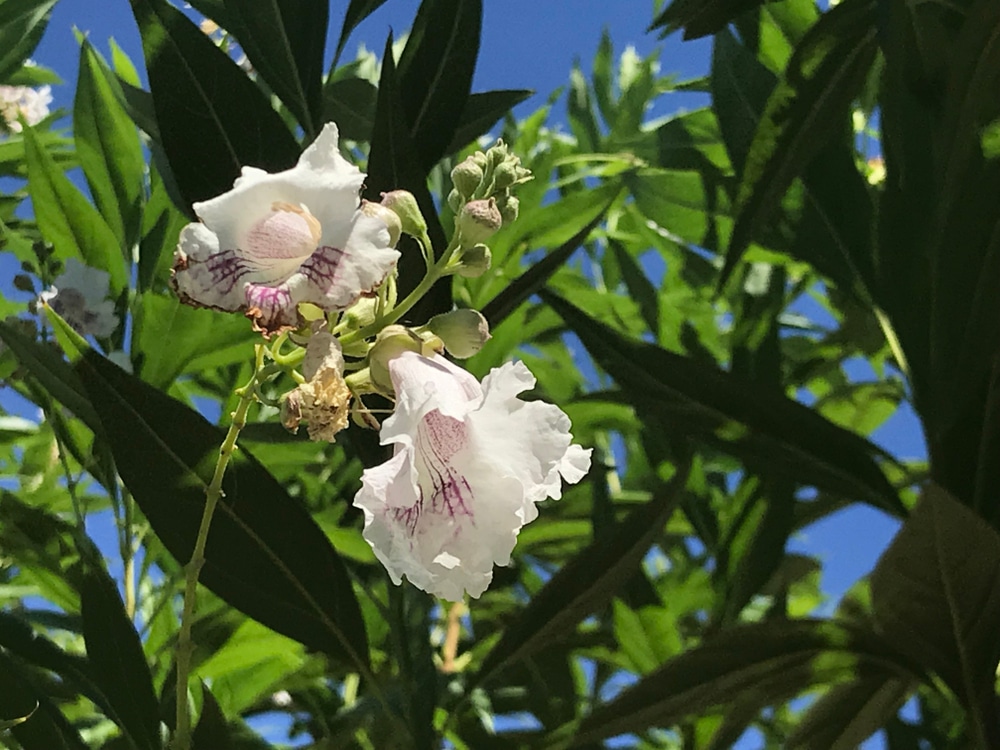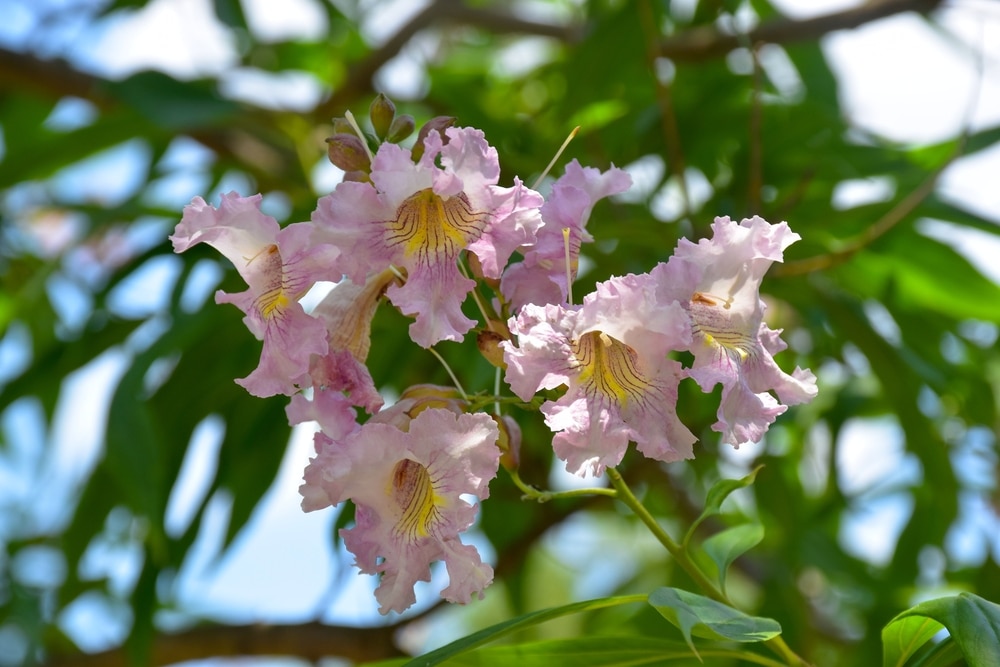Are you considering how to landscape your backyard and whether to plant a Chitalpa tree? These beautiful ornamental trees are a popular choice for the Southwestern United States since they flower from mid-May until October and sometimes November. There are several advantages for anyone looking to change their yard’s landscape with a Chitalpa tree.
In the guide below, you will learn about the benefits and disadvantages of planting the Chitalpa tree and how to plant one yourself.
Ready to find out more? Let’s get started!
The Advantages of Planting Chitalpa Trees

The top pros of planting a gorgeous Chitalpa tree in your backyard include:
- Their fast growth, so you won’t need to wait too long for the tree to grow out
- Their ability to provide plenty of shade
- The gorgeous flowers produced and the beauty the tree brings to your yard or garden
- The easy maintenance of the Chitalpa tree
- The planting in plastic root bags makes them simple to take care of
Chitalpa trees also provide a great way to beautify your surroundings and purify the air around you. The trees also offer a home for lovely birds and prevent soil erosion.
The Disadvantages of Planting Chitalpa Trees
A few disadvantages you may face after planting Chitalpa trees include:
- The possible health issues (verticillium wilt and root rot) that can kill the trees
- Aphid infestations can negatively impact the Chitalpa tree’s health
- No medicinal uses of Chitalpa trees
- Heavy leaf loss in the summertime
The summertime heat can cause problems for Chitalpa trees, and you may see many leaves falling all over the ground. One way you can prevent the problem is to get rid of weeds growing around the tree, as small insects may cause the problem.
You can also remove aphid infestation with a garden hose. Further, you can prevent root rot by planting in a well-drained region and ensuring you don’t overwater the tree.
Should You Plant a Chitalpa Tree in Your Backyard or Not?
Whether or not to plant a Chitalpa tree depends on how much time you devote to gardening and taking care of a new tree. Since the Chitalpa tree is relatively low-maintenance and does not even require watering once it has grown, you can likely take on the effort of planting it.
The tree grows quickly, so you will not have to water it for too long. However, you may have to manage the possible health risks of these trees.
Do you want plenty of shade in the summertime? If so, the beautiful, flowering Chitalpa tree is a perfect addition. You will also get more wildlife and birds to enjoy, as the tree will bring more animals to your garden.
How To Plant a Chitalpa Tree
Chitalpa trees grow best in the hardiness zones 6 through 9. You should plant the tree in a sunny location in well-draining soil. Some shade is fine, too. These trees can tolerate soils with high alkalinity levels. Make sure to water the tree occasionally for the best results. When the weather gets dry, you may need to irrigate the soil.
The best Chitalpa tree care includes regular pruning as well. You can thin out some branches to give the tree a nicer look.
Before You Go
Now that you’ve read through the guide here, you should know the top Chitalpa tree pros and cons, along with whether to follow through and plant the tree in your yard. Enjoy your landscaping adventure! Soon, you’ll have a nice, shady tree to picnic under.
